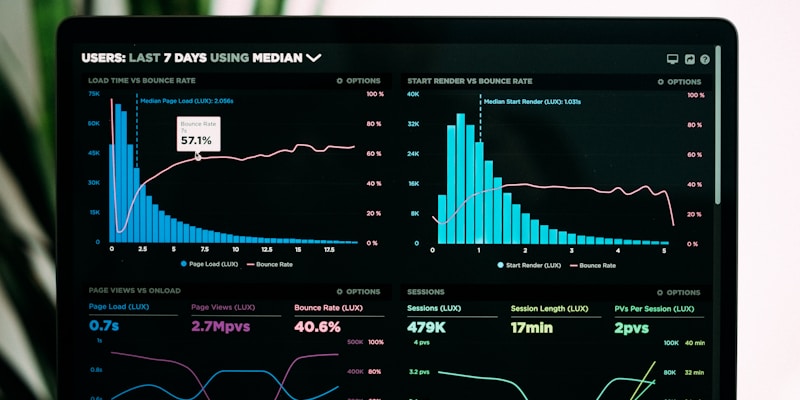The Agentic Revolution: How AI Agents Are Silently Hijacking Your Workflow
exposes the dramatic shift from traditional automation to autonomous AI agents that think, adapt, and act independently. While executives debate AI strategy, these intelligent systems are already quietly transforming business operations across industries—from healthcare achieving 40% productivity gains to legal firms automating 74% of hourly work.
The Agentic Revolution: How AI Agents Are Silently Hijacking Your Workflow
While you were busy optimizing spreadsheets, artificial intelligence quietly evolved from chatbot to colleague—and it's coming for your manual processes.
The $93 Billion Wake-Up Call
Remember when the biggest workplace disruption was switching from fax machines to email? Those days feel quaint now that we're staring down a $93.20 billion agentic AI market by 2032—growing at a jaw-dropping 44.6% annually. But here's the kicker: while executives are throwing around buzzwords like "digital transformation," most have no idea that AI agents are already quietly automating tasks across their organizations.
The uncomfortable truth? Your competition isn't just adopting AI—they're deploying autonomous agents that work 24/7, never call in sick, and actually get smarter over time. Meanwhile, only 1% of organizations consider themselves "mature" in AI deployment, despite 92% planning to increase investments. It's like watching someone enthusiastically buy a Ferrari while refusing to learn how to drive stick.
What Makes Agentic AI Different (Spoiler: It's Not Just ChatGPT++)
Let's clear up the confusion. Traditional automation follows scripts like a very expensive calculator. Generative AI responds to prompts like a talented intern. But agentic AI? It's the difference between a vending machine and a personal assistant who anticipates your needs, makes decisions, and handles complex multi-step processes without constant supervision.
Here's what sets agentic AI apart:
Autonomous Decision-Making
Traditional RPA breaks when a button moves three pixels. Agentic AI adapts, reasons through problems, and finds alternative solutions. Skyvern's computer vision agents can navigate websites they've never seen before, while traditional bots require explicit programming for every possible scenario.
Goal-Oriented Behavior
Instead of "if this, then that" logic, these agents understand objectives and work backward to achieve them. Microsoft's Autogen enables multi-agent collaboration where different AI entities negotiate, plan, and execute complex workflows together.
Continuous Learning
Every interaction makes them smarter. PwC's research shows AI-skilled workers earn 43% more than their non-AI counterparts, but the real advantage goes to organizations deploying learning systems that compound their capabilities over time.
The ROI Reality Check: Numbers That Actually Matter
Let's talk brass tacks. The automation industry loves throwing around impressive-sounding statistics, but here's what's actually happening in the trenches:
The Good:
- Companies deploying agentic AI expect 36% of work tasks automated within the next two years
- Marketing automation delivers 544% ROI on average
- 87% of sales professionals report AI saves them over 2 hours daily
- Organizations with comprehensive AI governance experience 40% fewer ethical incidents
The Reality Check:
- 85% of AI projects fail, primarily due to poor data quality and unclear objectives
- Only 19% of companies report revenue increases exceeding 5% from AI initiatives
- 40% of agentic AI projects will be canceled by 2027, according to Gartner
The pattern is clear: success requires strategy, not just technology. Banner Health automated insurance coverage discovery, Auburn Community Hospital reduced billing cases by 50%, and the USDA reallocated 551,000 hours to mission-critical work. The common thread? They identified specific problems and applied targeted solutions with clear success metrics.
Platform Wars: The Battle for Your Automation Stack
The competitive landscape reads like a tech industry Game of Thrones, with established giants, scrappy startups, and open-source insurgents all vying for dominance:
The Enterprise Titans
- UiPath maintains 22% RPA market share but faces existential pressure from Microsoft's ecosystem lock-in
- Salesforce Agentforce deploys 67% faster than previous Einstein platform, transforming CRM into autonomous sales force
- Microsoft Power Platform leverages Office 365's 500 million users for seamless AI automation integration
The AI-First Disruptors
- OpenAI's upcoming Operator promises to automate any browser-based task through natural language
- Anthropic's Claude leads coding benchmarks at 72.5%, positioning as developer's choice
- n8n offers automation capabilities up to 1000x cheaper than proprietary platforms
The Dark Horses
- CrewAI processes tasks 5.76x faster than traditional frameworks
- LangChain has become the backbone of modern AI automation orchestration
- Relevance AI provides enterprise-grade agent orchestration with visual workflow design
Industry Impact: Winners, Losers, and the Surprising Middle
Healthcare: Leading the Charge
With 12% adoption rate and AI deployed in 74% of hospitals, healthcare demonstrates what strategic automation looks like. Clinical documentation automation increased coder productivity by 40%, while drug discovery timelines were cut in half. Yet the same technology threatens medical coding jobs—a reminder that efficiency gains come with human costs.
Finance: Evolution Over Revolution
PayPal processes over 200 petabytes through AI fraud detection, while robo-advisors manage trillions in assets. But rather than wholesale job elimination, finance has seen role evolution—traders become algorithm supervisors, analysts become model validators.
Legal: Existential Reckoning
AI can now automate 74% of hourly legal work, with adoption surging from 19% to 79% between 2023 and 2024. Document review that once employed armies of junior associates now happens in milliseconds. The democratization is real—smaller firms can now compete with BigLaw—but traditional career paths face fundamental disruption.
Manufacturing: The Productivity Paradox
1.7 million jobs lost since 2000, yet 25% productivity gains achieved. BMW's predictive maintenance AI prevents 500 minutes of annual disruption per plant, but each efficiency gain reduces workforce needs.
The 2025-2030 Horizon: Convergence and Consequences
Gartner predicts 15% of work decisions will be made autonomously by 2028, up from essentially zero today. This isn't gradual change—it's a fundamental reimagining of organizational structure.
Technical Convergence
- Neuromorphic computing promises brain-like efficiency by 2027
- Multi-modal models already process text, images, and video simultaneously
- Edge computing enables local AI processing, reducing cloud dependency
- Spatial intelligence bridges digital-physical divide for truly autonomous systems
Market Dynamics
- 60% of new enterprise AI deployments in 2025 include agentic capabilities
- AutoGPT usage surged 920% between 2023-2025 among developers
- Meta targets hundreds of millions of small businesses for agentic AI deployment
Workforce Implications
The IMF estimates 40% of global jobs face AI exposure, with 60% in advanced economies. While the World Economic Forum predicts 97 million new roles by 2025, geographic concentration in tech hubs threatens to exacerbate global inequality.
Strategic Imperatives: Your Survival Guide
Success in the agentic era requires fundamental strategic shifts:
1. Data Infrastructure Is Your Foundation
With 85% of leaders citing data quality as primary concern, organizations investing in data infrastructure gain insurmountable advantages. This isn't just cleaning spreadsheets—it's creating living data ecosystems that feed AI systems.
2. Governance Can't Be an Afterthought
The EU AI Act's enforcement beginning in 2025 establishes global precedents with fines reaching €35 million. Companies building trust through transparency capture markets that risk-averse competitors can't touch.
3. Human-AI Collaboration Is the Competitive Edge
PwC predicts AI agents could effectively "double" knowledge workforce capacity. Success comes from positioning humans as orchestrators, creative directors, and ethical guardians—not competitors to AI.
4. Platform Selection Determines Destiny
Choose between Microsoft's ecosystem lock-in, open-source flexibility, or specialized solutions carefully. The evidence suggests a portfolio approach: enterprise platforms for mission-critical processes, open-source for experimentation, specialized solutions for industry-specific needs.
The Uncomfortable Truth About Tomorrow
The AI automation revolution isn't coming—it's here, quietly rewiring business operations while executives debate strategy. Companies that fail to adopt AI automation risk obsolescence, while those that rush implementation without proper frameworks risk catastrophic failures.
The paradox of our moment is that AI automation is simultaneously overhyped and underestimated. Overhyped in its near-term ability to replace human judgment, underestimated in its long-term potential to reshape entire industries.
The ultimate insight? AI automation isn't just changing how we work—it's forcing us to reconsider why we work, what value humans provide, and how we distribute the benefits of unprecedented productivity gains.
As we stand at this inflection point, the question isn't whether to automate but how to automate responsibly, strategically, and humanely. The organizations that answer this question successfully won't just survive the automation revolution—they'll define what work means in the 21st century.
The evidence suggests we have perhaps five years to get this right before competitive positions crystallize and societal impacts become irreversible. The companies, governments, and societies that grapple honestly with these questions will shape the next chapter of human progress. Those that don't will become footnotes in the history of technological disruption.
Ready to stop wasting time and start scaling with automation? The revolution is happening whether you're prepared or not. The question is: will you be leading it or learning about it from the unemployment line?
Enjoyed this post?
Subscribe to get notified when I publish new content about web development and technology.





